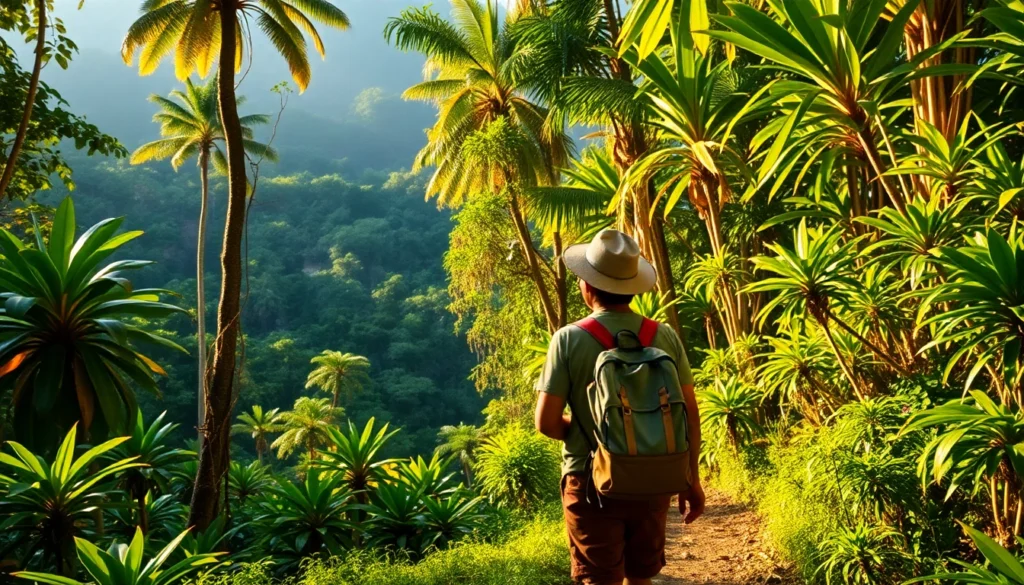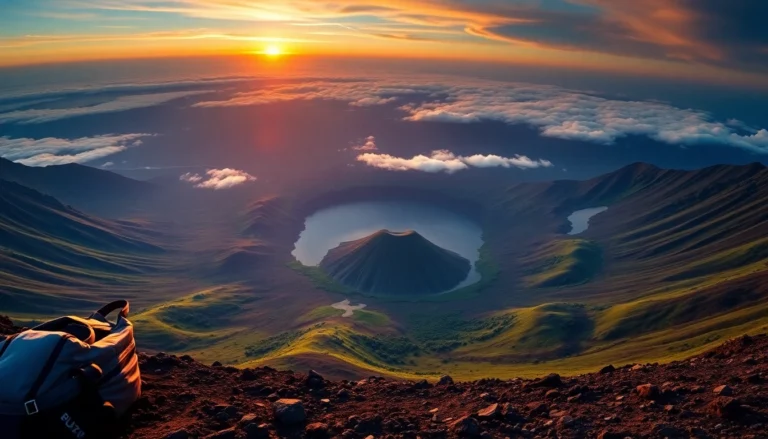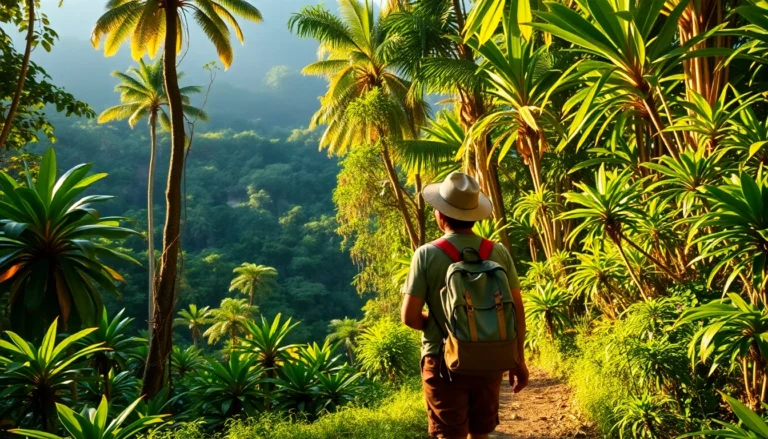
Introduction to Lombok: A Must-Visit Indonesian Destination
Nestled in the Indonesian archipelago, Lombok stands out as a captivating destination renowned for its stunning natural landscapes, rich cultural heritage, and warm local hospitality. Often overshadowed by neighboring Bali, Lombok offers a more tranquil and authentic Indonesian experience, making it an ideal choice for travelers seeking adventure, relaxation, or cultural immersion. From the imposing peaks of Mount Rinjani to pristine beaches lapped by turquoise waters, Lombok is a treasure trove waiting to be explored. To maximize your visit and navigate this diverse island effectively, a comprehensive guide can serve as an essential tool, providing valuable insights, practical tips, and curated recommendations that elevate your journey from memorable to extraordinary.
Planning Your Trip to Lombok: Tips and Essential Information
Best Time to Visit and Seasonal Considerations
Timing is crucial when planning your Lombok adventure. The island experiences a tropical climate with distinct dry and rainy seasons. The optimal period to visit is during the dry season, typically from May to September, when the weather is sunny, the humidity is lower, and outdoor activities like trekking and snorkeling are most enjoyable. Traveling during this window also aligns with the peak tourist season, so booking accommodations and tours in advance is advisable to secure the best rates and availability.
Conversely, the rainy season from November to April can bring heavy showers, which, while less ideal for outdoor pursuits, offers a different charm with lush landscapes and fewer crowds. If you prefer to avoid the crowds, consider shoulder months such as April or October, balancing decent weather with manageable tourist numbers. Always check local weather forecasts and seasonal patterns before finalizing your travel dates.
Must-Know Travel Tips and Local Customs
Understanding local customs and cultural sensitivities enhances respectful interactions and enriches your experience. Lombok is primarily Muslim, so modest attire is appreciated, especially when visiting religious sites or rural communities. Covering shoulders and knees is recommended. Greetings often involve polite gestures like handshakes or slight bowing, accompanied by Bahasa Indonesia phrases such as “Selamat pagi” (Good morning) or “Terima kasih” (Thank you).
Currency exchange is readily available in main towns, but carrying some cash in Indonesian Rupiah is essential, as many remote areas do not accept cards. Tipping is not obligatory but appreciated for good service. Respect for local traditions, such as avoiding public displays of affection or disruptive behavior, fosters positive interactions and reflects cultural sensitivity.
Getting Around Lombok: Transportation Options and Routes
Efficient transportation is pivotal in exploring Lombok’s diverse attractions. The most common options include renting a scooter or motorcycle, which provides flexibility and access to off-the-beaten-path destinations. Alternatively, private drivers and arranged tours offer comfort and convenience for day trips, especially when visiting sites like Mount Rinjani or secluded beaches.
Public transportation is limited but available via regional minibusses (“bemo”). These are budget-friendly but less reliable regarding timings and routes. For longer distances, domestic flights connect Lombok to major Indonesian hubs like Jakarta and Bali, useful for those combining island-hopping itineraries.
For seamless travel, consider pre-arranged transportation packages or ride-sharing apps like Gojek in urban areas. Planning routes ahead and understanding traffic conditions can save time and reduce travel stress, allowing more time to enjoy the island’s myriad attractions.
Top Attractions and Activities in Lombok
Exploring Mount Rinjani: Trekking and Adventure
Mount Rinjani stands as Lombok’s crown jewel, an active volcano and Indonesia’s second-highest peak, reaching 3,726 meters. Trekking Rinjani is a challenging yet rewarding adventure, attracting hikers from around the globe. The multi-day trek offers breathtaking vistas, lush forests, volcanic craters, and hot springs.
Typically, guided tours span 2-4 days, with routes such as the Senaru and Sembalun trails. Preparation involves booking permits, hiring experienced guides, and training physically. Essential gear includes sturdy hiking boots, warm clothing for summit cold, and camping equipment. The experience culminates with a sunrise view from the summit—a truly unforgettable spectacle of nature’s grandeur.
Beaches, Waterfalls, and Natural Wonders
Lombok boasts some of Indonesia’s most pristine beaches, perfect for surfing, snorkeling, or relaxing under the sun. Kuta Beach on the southern coast is famous for swell-driven surf, while Senggigi offers calmer waters and vibrant nightlife. For solitude, Pink Beach (Tangsi Beach) captivates visitors with its distinctive pink-hued sands.
Waterfalls such as Sendang Gile and Tiu Kelep in the north are scenic oases ideal for picnics and swimming, surrounded by verdant jungle. The Allure of the Benang Stokal and Benang Kelambu waterfalls lies in their lush settings and refreshing pools. Exploring natural wonders like the Segara Anak Lake within Rinjani National Park provides unique opportunities for photography, birdwatching, and spiritual reflection.
Cultural Sites and Local Markets to Experience
Discover Lombok’s rich cultural tapestry through visits to traditional Sasak villages, where indigenous communities maintain craftsmanship and customs. Offerings, dances, and intricate textiles showcase the island’s heritage. Notable sites include the Sade Village and Sukarara weaving center.
Markets such as Pasar Anyar in Mataram or Senggigi Market are vibrant hubs for local produce, souvenirs, and street food. Sampling traditional dishes like Ayam Taliwang (spicy grilled chicken) and integrating with local artisans can deepen your cultural connection. Engaging with residents and participating in cultural ceremonies enriches the travel experience beyond typical sightseeing.
Accommodation, Food, and Local Experiences
Recommended Stay Options for Different Budgets
Lombok offers a range of accommodations catering to various budgets, from luxury resorts to budget guesthouses. For luxury travelers, upscale resorts along the southern coast provide private villas, spa services, and personalized experiences. Mid-range hotels and boutique stays in Senggigi, Kuta, or the Gili Islands strike a balance between comfort and affordability.
Budget travelers can opt for homestays, hostels, or simple guesthouses that offer authentic hospitality and a chance to interact closely with local communities. Booking in advance, especially during peak season, ensures availability and better rates. Consider platforms like Booking.com or Agoda for comprehensive options and reviews.
Authentic Indonesian Cuisine and Must-Try Dishes
Indonesian cuisine is a feast of flavors, and Lombok is no exception. Beyond the well-known nasi goreng and satay, lombok’s local dishes feature bold spices and fresh ingredients. Ayam Taliwang, a fiery grilled chicken served with spicy sambal, is a regional specialty rooted in local traditions.
Seafood is abundant and often prepared simply to highlight freshness—think grilled fish, prawns, and ceviche-style dishes. Sate Bulayak (balinese-style satay) and Plecing Kangkung (spicy water spinach salad) are popular favorites. Sampling street food at local markets or participating in cooking classes can elevate your culinary experience.
Engaging with Local Communities and Traditions
Authentic travel involves immersing oneself in local customs and participating in community activities. Attend traditional Sasak ceremonies, dance performances, or craft workshops to understand their cultural fabric. Responsible tourism encourages supporting local artisans, staying in community-run accommodations, and respecting ecological practices.
By engaging directly with residents, travelers foster meaningful connections and promote sustainable tourism, ensuring Lombok’s natural and cultural riches are treasured for future generations.
Practical Advice and Travel Resources
Safety Tips and Emergency Contacts in Lombok
Lombok is generally safe for travelers, but standard precautions should be observed. Always keep copies of important documents, avoid flashing valuables, and stay aware of your surroundings. In case of emergencies, contact the local police (call 112 or 110) or assistance centers. Foreigners should register with their embassy or consulate upon arrival.
Health-wise, ensure vaccinations are up-to-date, carry essential medications, and drink bottled water. For medical emergencies, facilities are available in main towns, but advanced treatments might require transportation to Bali.
Helpful Travel Apps and Booking Platforms
Digital tools greatly facilitate your trip planning and on-the-go navigation. Popular apps include Google Maps for route planning, WhatsApp for communication, and Grab/Gojek for rides. Booking platforms like Booking.com, Agoda, and GetYourGuide provide access to accommodations, tours, and activities with reviews and secure payment options. Local SIM cards with data plans help stay connected and access travel resources seamlessly.
Additional Resources for a Seamless Journey
Consult travel blogs, forums like TripAdvisor, and official tourism websites for updated insights. Community groups on social media often share real-time recommendations. Additionally, hiring local guides or joining organized tours ensures deeper engagement and safer exploration, especially for adventurous activities like trekking Rinjani or exploring remote waterfalls.



